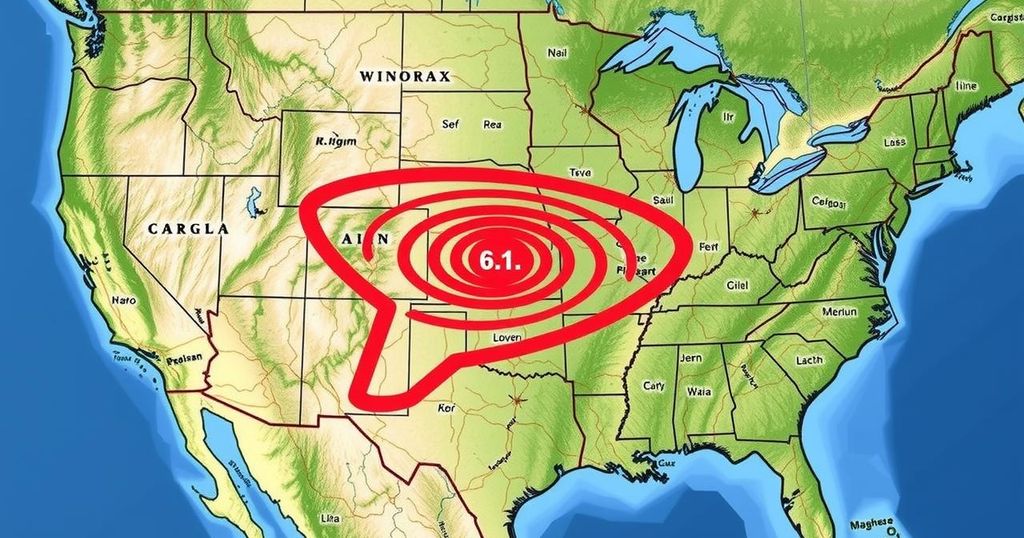Recent Earthquake Activities Highlight Global Seismic Instability

On January 2nd, a 6.1-magnitude earthquake struck Calama, Chile, at a depth of 99 kilometers, with multiple reports from locals. This followed a series of other earthquakes in California and Alaska, highlighting ongoing tectonic activity. Notably, a 6.7-magnitude quake occurred in the Kuril Islands just days prior, demonstrating a pattern of significant seismic events in various regions.
A significant seismic event occurred in Chile on January 2nd, resulting in a 6.1-magnitude earthquake recorded by the United States Geological Survey (USGS). The earthquake was localized in Calama, with a depth of approximately 99 kilometers (61.5 miles). At the time of reporting, the USGS had received 25 accounts of individuals who felt the earthquake.
This event followed a 4.7-magnitude earthquake in California on January 1st, centered in Cobb and registered at a depth of around 1.1 kilometers (0.7 miles). Earlier in the week, Alaska experienced a 3.3-magnitude earthquake on December 30th, with its epicenter located in Nikolski at a depth of 39.5 kilometers (25 miles).
In a sequence of seismic activities, the Fort Bidwell region in California also experienced a 3.3-magnitude earthquake on the same day, shortly after a 6.7-magnitude earthquake occurred in the Kuril Islands on December 27th, which was reported to be at a depth of 162.6 kilometers (101 miles). The Kuril earthquake followed a 3.6-magnitude earthquake in McCarthy, Alaska, on December 26th.
Prior to these events, California experienced a 3.0-magnitude quake centered in Clayton at a depth of 13.2 kilometers (8.2 miles) on December 25th. Notably, a significant 5.9-magnitude earthquake struck Cuba on December 23rd, centered in Guisa at a depth of 22.2 kilometers (13.8 miles). This sequence of seismic occurrences highlights ongoing tectonic activity in these regions.
The article discusses a series of recent earthquakes in various locations, primarily focusing on the significant 6.1-magnitude earthquake that occurred in Chile. It provides a timeline of seismic activities, detailing their magnitudes, depths, and geographical locations, as reported by the United States Geological Survey (USGS). Understanding the nature and impact of these earthquakes is crucial for assessing their effects on local populations and the geological stability of the regions involved.
The recent spate of earthquakes ranging from 6.1 in Chile to smaller tremors in California and Alaska underscores the dynamic nature of seismic activity worldwide. These events serve as a reminder of the Earth’s geological instability and the need for continued monitoring by agencies such as the USGS. The interconnectedness of seismic events emphasizes the importance of preparedness in earthquake-prone areas.
Original Source: www.570wkbn.com








